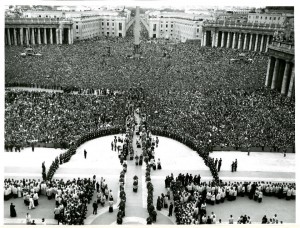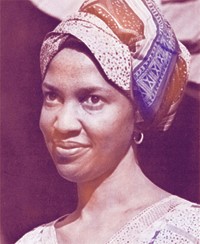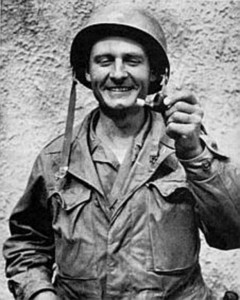
At the time of this writing, Brookland is winding down after hosting North America’s first canonization mass. During his visit yesterday, Pope Francis canonized St. Juniperro Serra. While this new saint never set foot on the campus, this does not mean that CUA has no direct connections with any holy figures. In addition to visits from popes and presidents, several alumni currently have open causes for canonization.
Saints come in all shapes and sizes. A classic image of the saint may be one of a faithful martyr or a robed missionary, such as Serra. We may even think of them as primarily ancient or medieval figures. However, the modern age has seen a flourishing of canonizations. Yesterday’s ceremony was the culmination of decades of investigations, advocacy, and devotion. The process to being declared a saint is complex, with a number of steps and inquiries along the way. Beginning as a Servant of God, individuals with an open cause may eventually proceed to Venerable to Blessed and, finally, to Saint. Some figures, like Serra, may be held at one stage for decades (or even centuries!), while others may move along in the process more quickly. This process has a long history, stretching back to the earliest days of Christianity, although the papacy itself was not always directly involved.

The first example of a papal canonization is that of St. Udalric, performed by Pope John XV in 993. As the centuries progressed, the popes assumed more and more responsibility for canonization. By the late twelfth century, Popes Alexander III and Innocent III solidified papal involvement in the canonization process. (In prior centuries, saints were often decreed as such through popular acclamation or under the authority of local bishops.) Early modern pontiffs, such as Urban VIII and Benedict XIV, helped codify canonization into canon law. This period also saw a further centralization of the process with the creation of the Sacred Congregation for Rites. Since Vatican II, a number of further curial reorganizations have resulted in the establishment of the Congregation for the Causes of Saints.
So where exactly does CUA fit in with this process? Many of you may have heard of Archbishop Fulton Sheen, CUA alumnus and former professor, who is currently considered Venerable. Sister Thea Bowman, an alumna of the English department (MA ’69, PhD ’72), is currently a Servant of God. A member of the Franciscan Sisters of Perpetual Adoration, she was an educator, public speaker, and minister to African-American communities. She was instrumental in creating numerous Catholic multiethnic projects and was an advocate for Black Catholic voices. While writing hymnals and teaching locally, she also advised the US bishops on ethnic and spiritual matters. Despite being diagnosed with breast cancer at a young age, she continued her work up until her death in 1990. She is fondly remembered through educational foundations as well as a cause for canonization.

Another CUA alumnus who is likewise a Servant of God is Father Emil Kapaun. Both before and after he earned an MA in Education at CUA (1948), Kapaun served as a military chaplain. Captured during the Korean War, he is best remembered for the sacrifices he made to protect his fellow POWs. He would forage for food, tend to the sick, and find ways to protect the men from physical harm and demoralization. Despite dying in captivity in 1951, his deeds have been recalled by servicemen for the past 60 years. In 2013, President Obama posthumously awarded Kapaun the Medal of Honor. His cause, advocated by his home diocese in Wichita, Kansas, has been open since 1993.
In addition to these CUA figures, the Archives also houses records related to a number of other individuals currently in the process of canonization, from Mary Virginia Merrick (Servant of God) to Blessed Mother Teresa. So while tracing the footsteps of the saints may be easier in a city like Rome, Washington is not without its own resident holy women and men.
